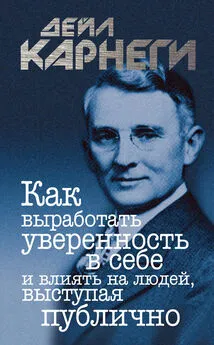Ник Коленда - Система убеждения [Как влиять на людей с помощью психологии]
- Название:Система убеждения [Как влиять на людей с помощью психологии]
- Автор:
- Жанр:
- Издательство:Альпина Паблишер
- Год:2018
- Город:Москва
- ISBN:978-5-9614-5086-6
- Рейтинг:
- Избранное:Добавить в избранное
-
Отзывы:
-
Ваша оценка:
Ник Коленда - Система убеждения [Как влиять на людей с помощью психологии] краткое содержание
Система убеждения [Как влиять на людей с помощью психологии] - читать онлайн бесплатно ознакомительный отрывок
Интервал:
Закладка:
Burnkrant, R. E. & Unnava, H. R. (1995). Effects of self-referencing on persuasion. Journal of Consumer Research, 22 (1), 17–26.
Bushman, B. J. & Stack, A. D. (1996). Forbidden fruit versus tainted fruit: Effects of warning labels on attraction to television violence. Journal of Experimental Psychology: Applied, 2 (3), 207–226.
Carlin, A. S., Hoffman, H. G. & Weghorst, S. (1997). Virtual reality and tactile augmentation in the treatment of spider phobia: a case report. Behaviour Research and Therapy, 35 (2), 153–158.
Catherall, D. R. (2004). Handbook of Stress, Trauma, and the Family(Vol. 10). New York: Brunner-Routledge.
Chaiken, S. (1980). Heuristic versus systematic information processing and the use of source versus message cues in persuasion. Journal of Personality and Social Psychology, 39 (5), 752–766.
Chandon, P., Hutchinson, J. W., Bradlow, E. T. & Young, S. H. (2009). Does in-store marketing work? Effects of the number and position of shelf facings on brand attention and evaluation at the point of purchase. Journal of Marketing, 73, 1–17.
Chartrand, T. L., Dalton, A. N. & Fitzsimons, G. J. (2007). Nonconscious relationship reactance: When significant others prime opposing goals. Journal of Experimental Social Psychology, 43 (5), 719–726.
Chatterjee, A. (2010). Neuroaesthetics: A coming of age story. Journal of Cognitive Neuroscience, 23 (1), 53–62.
Chernev, A. (2011). Semantic anchoring in sequential evaluations of vices and virtues. Journal of Consumer Research, 37 (5), 761–774.
Cialdini, R. B. (2003). Crafting normative messages to protect the environment. Current Directions in Psychological Science, 12 (4), 105–109.
Cialdini, R. B., Demaine, L. J., Sagarin, B. J., Barrett, D. W., Rhoads, K. & Winter, P. L. (2006). Managing social norms for persuasive impact. Social Influence, 1 (1), 3–15.
Cialdini, R. B., Reno, R. R. & Kallgren, C. A. (1990). A focus theory of normative conduct: Recycling the concept of norms to reduce littering in public places. Journal of Personality and Social Psychology, 58(6), 1015–1026.
Cialdini, R. B., Vincent, J. E., Lewis, S. K., Catalan, J., Wheeler, D., & Darby, B. L. (1975). Reciprocal concessions procedure for inducing compliance: The door-in-the-face technique. Journal of Personality and Social Psychology, 31(2), 206–215.
Cohen, B., Waugh, G. & Place, K. (1989). At the movies: An unobtrusive study of arousal-attraction. The Journal of Social Psychology, 129(5), 691–693.
Collins, A. M. & Loftus, E. F. (1975). A spreading-activation theory of semantic processing. Psychological Review, 82 (6), 407–428.
DeBono, K. G. & Krim, S. (1997). Compliments and perceptions of product quality: An individual difference perspective. Journal of Applied Social Psychology, 27 (15), 1359–1366.
Deci, E. L. & Ryan, R. M. (1980). The empirical exploration of intrinsic motivational processes. Advances in Experimental Social Psychology, 13(2), 39–80.
Deighton, J., Romer, D. & McQueen, J. (1989). Using drama to persuade. Journal of Consumer Research, 335–343.
DeWall, C. N., MacDonald, G., Webster, G. D., Masten, C. L., Baumeister, R. F., Powell, C., Combs, D., Schurtz, D., Stillman, T., Tice, D., & Eisenberger, N. I. (2010). Acetaminophen reduces social pain behavioral and neural evidence. Psychological Science, 21 (7), 931–937.
Diehl, K. & Lamberton, C. (2008). Great expectations?! Assortment size, expectations and satisfaction. Journal of Marketing Research, 47 (2), 312–322.
Dienstbier, R. A. (1989). Arousal and physiological toughness: implications for mental and physical health. Psychological Review, 96 (1), 84.
Dijksterhuis, A. & van Knippenberg, A. (1998). The relation between perception and behavior, or how to win a game of Trivial Pursuit. Journal of Personality and Social Psychology, 74 (4), 865.
Drolet, A. L. & Morris, M. W. (2000). Rapport in conflict resolution: Accounting for how face-to-face contact fosters mutual cooperation in mixed-motive conflicts. Journal of Experimental Social Psychology, 36 (1), 26–50.
Dutton, D. G. & Aron, A. P. (1974). Some evidence for heightened sexual attraction under conditions of high anxiety. Journal of Personality and Social Psychology, 30 (4), 510.
Dunyon, J., Gossling, V., Willden, S. & Seiter, J. S. (2010). Compliments and purchasing behavior in telephone sales interactions. Psychological Reports, 106 (1), 27.
Eisenberger, N. I. & Lieberman, M. D. (2004). Why rejection hurts: a common neural alarm system for physical and social pain. Trends in Cognitive Sciences, 8 (7), 294–300.
Englich, B., Mussweiler, T. & Strack, F. (2006). Playing dice with criminal sentences: The influence of irrelevant anchors on experts' judicial decision making. Personality and Social Psychology Bulletin, 32 (2), 188–200.
Epley, N. & Gilovich, T. (2006). The anchoring-and-adjustment heuristic: Why the adjustments are insufficient. Psychological Science, 17 (4), 311–318.
Epley, N. & Whitchurch, E. (2008). Mirror, mirror on the wall: Enhancement in self-recognition. Personality and Social Psychology Bulletin, 34 (9), 1159–1170.
Falk, A. & Kosfeld, M. (2006). The hidden costs of control. The American Economic Review, 1611–1630.
Festinger, L. & Carlsmith, J. M. (1959). Cognitive consequences of forced compliance. The Journal of Abnormal and Social Psychology, 58 (2), 203.
Fitzsimons, G. M. & Bargh, J. A. (2003). Thinking of you: Nonconscious pursuit of interpersonal goals associated with relationship partners. Journal of Personality and Social Psychology, 84 (1), 148.
Fitzsimons, G. M., Chartrand, T. L. & Fitzsimons, G. J. (2008). Automatic effects of brand exposure on motivated behavior: how apple makes you "think different." Journal of Consumer Research, 35 (1), 21–35.
Foroni, F. & Semin, G. R. (2009). Language that puts you in touch with your bodily feelings: The multimodal responsiveness of affective expressions. Psychological Science, 20 (8), 974–980.
Förster, J. (2003). The influence of approach and avoidance motor actions on food intake. European Journal of Social Psychology, 33 (3), 339–350.
Freedman, J. L. & Fraser, S. C. (1966). Compliance without pressure: The foot-in-the-door technique. Journal of Personality and Social Psychology, 4 (2), 195–202.
Friedman, R. & Elliot, A. J. (2008). The effect of arm crossing on persistence and performance. European Journal of Social Psychology, 38 (3), 449–461.
Frieze, I. H., Olson, J. E. & Russell, J. (1991). Attractiveness and income for men and women in management. Journal of Applied Social Psychology, 21 (13), 1039–1057.
Gandhi, B. & Oakley, D. A. (2005). Does 'hypnosis' by any other name smell as sweet? The efficacy of 'hypnotic' inductions depends on the label 'hypnosis.' Consciousness and Cognition, 14 (2), 304–315.
Gawronski, B., Bodenhausen, G. V. & Becker, A. P. (2007). I like it, because I like myself: Associative self-anchoring and post-decisional change of implicit evaluations. Journal of Experimental Social Psychology, 43 (2), 221–232.
Glocker, M. L., Langleben, D. D., Ruparel, K., Loughead, J. W., Gur, R. C. & Sachser, N. (2009). Baby schema in infant faces induces cuteness perception and motivation for caretaking in adults. Ethology, 115(3), 257–263.
Gneezy, U., Meier, S. & Rey-Biel, P. (2011). When and why incentives (don't) work to modify behavior. The Journal of Economic Perspectives, 25(4), 191–209.
Gneezy, U. & Rustichini, A. (2000a). Pay enough or don't pay at all. The Quarterly Journal of Economics, 115(3), 791–810.
Gneezy, U. & Rustichini, A. (2000b). A Fine is a Price. The Journal of Legal Studies, 29 (1), 1–17.
Goldsmith, K., Cho, E. K. & Dhar, R. (2012). When guilt begets pleasure: The positive effect of a negative emotion. Journal of Marketing Research, 49(6), 872–881.
Goldstein, N. J. & Cialdini, R. B. (2007). The spyglass self: A model of vicarious self-perception. Journal of Personality and Social Psychology, 92(3), 402.
Goldstein, N. J., Cialdini, R. B. & Griskevicius, V. (2008). A room with a viewpoint: Using social norms to motivate environmental conservation in hotels. Journal of Consumer Research, 35(3), 472–482.
Guéguen, N. (2009). Mimicry and seduction: An evaluation in a courtship context. Social Influence, 4 (4), 249–255.
Guéguen, N., Martin, A. & Meineri, S. (2011). Mimicry and helping behavior: an evaluation of mimicry on explicit helping request. The Journal of Social Psychology, 151(1), 1–4.
Harmon-Jones, E. (2000). Cognitive dissonance and experienced negative affect: Evidence that dissonance increases experienced negative affect even in the absence of aversive consequences. Personality and Social Psychology Bulletin, 26 (12), 1490–1501.
Hassin, R. R. (2008). Being open minded without knowing why: Evidence from nonconscious goal pursuit. Social Cognition, 26(5), 578–592.
Hildum, D. C. & Brown, R. W. (1956). Verbal reinforcement and interviewer bias. Journal of Abnormal Psychology, 53 (1), 108.
Holland, R. W., Hendriks, M. & Aarts, H. (2005). Smells like clean spirit: Nonconscious effects of scent on cognition and behavior. Psychological Science, 16(9), 689–693.
Holland, R. W., Wennekers, A. M., Bijlstra, G., Jongenelen, M. M. & Van Knippenberg, A. (2009). Self-symbols as implicit motivators. Social Cognition, 27(4), 579–600.
Houlfort, N., Koestner, R., Joussemet, M., Nantel-Vivier, A. & Lekes, N. (2002). The impact of performance-contingent rewards on perceived autonomy and competence. Motivation and Emotion, 26 (4), 279–295.
Howard, D. J. (1990). The influence of verbal responses to common greetings on compliance behavior: The foot-in-the-mouth effect. Journal of Applied Social Psychology, 20 (14), 1185–1196.
Huang, L., Galinsky, A. D., Gruenfeld, D. H. & Guillory, L. E. (2011). Powerful postures versus powerful roles: Which is the proximate correlate of thought and behavior? Psychological Science, 22 (1), 95–102.
Huber, J., Payne, J. W. & Puto, C. (1982). Adding asymmetrically dominated alternatives: Violations of regularity and the similarity hypothesis. Journal of Consumer Research, 90–98.
Интересно, читает ли кто-нибудь эту библиографию. Если вы наткнулись на это тайное послание, поздравьте себя. В этом списке можно найти по-настоящему увлекательные и очень полезные исследования.
Iyengar, S. S., Huberman, G. & Jiang, W. (2004). How much choice is too much? Contributions to 401(k) retirement plans. Pension Design and Structure: New Lessons from Behavioral Finance, 83–96.
Jacob, C., Guéguen, N., Martin, A. & Boulbry, G. (2011). Retail salespeople's mimicry of customers: Effects on consumer behavior. Journal of Retailing and Consumer Services, 18 (5), 381–388.
Jones, M. C. (1924). The elimination of children's fears. Journal of Experimental Psychology, 7 (5), 382.
Jones, C. R., Olson, M. A. & Fazio, R. H. (2010). Evaluative conditioning: The "how" question. Advances in Experimental Social Psychology, 43, 205–255.
Jostmann, N. B., Lakens, D. & Schubert, T. W. (2009). Weight as an embodiment of importance. Psychological Science, 20 (9), 1169–1174.
Kawabata, H. & Zeki, S. (2004). Neural correlates of beauty. Journal of Neurophysiology, 91(4), 1699–1705.
Kenrick, D. T., Gutierres, S. E. & Goldberg, L. L. (1989). Influence of popular erotica on judgments of strangers and mates. Journal of Experimental Social Psychology, 25(2), 159–167.
Koenigs, M. & Tranel, D. (2008). Prefrontal cortex damage abolishes brand-cued changes in cola preference. Social Cognitive and Affective Neuroscience, 3 (1), 1–6.
Читать дальшеИнтервал:
Закладка:
![Обложка книги Ник Коленда - Система убеждения [Как влиять на людей с помощью психологии]](/books/1098396/nik-kolenda-sistema-ubezhdeniya-kak-vliyat-na-lyudej.webp)




![Ангелина Шам - Ангел влияния [Технологии коммуникативного гипноза для убеждения и мотивации людей] [litres]](/books/1076839/angelina-sham-angel-vliyaniya-tehnologii-kommunikati.webp)




